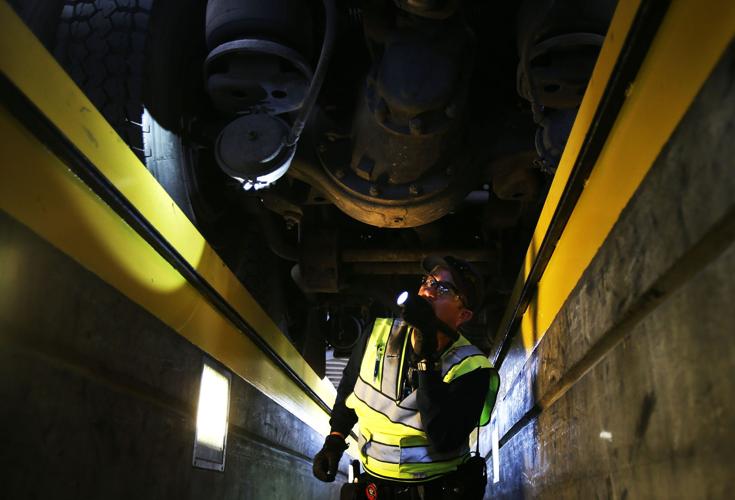Commercial truck drivers in Mexico who go through a new Arizona cross-border program are less likely to be flagged for safety violations when they show up at ports of entry, officials said.
“It’s a dramatic improvement that’s saving international carriers time and money, making Arizona roads safer and helping Arizona better appeal to drivers who might otherwise use ports in California or Texas,” Arizona Department of Transportation officials said in a news release.
In December, none of the 106 drivers with International Border Inspection Qualification training who entered the U.S. through commercial ports had a safety violation that required taking their trucks out of service for repairs.
And since August when the program began training drivers in Mexico, only two of 667 qualified drivers – 0.3 percent – entered Arizona with a violation that required immediate repairs, the release said, compared to about 5 percent among other commercial drivers using ADOT’s international ports.
ADOT inspectors check every commercial truck entering the U.S. at Nogales, Douglas and San Luis for safety violations. Depending on the violation, the truck may have to remain at the port of entry until it can be repaired, which is costly and time-consuming, truck drivers and ADOT officials have said.
“This outstanding program has been great both for Arizona and for our neighbors in Sonora,” ADOT Director John Halikowski said in the release. “In addition to making roads across Arizona safer, we are reducing inspection times and making Arizona’s international ports more appealing to commercial carriers.”
Arizona is the first state in the country to have inspectors travel across the border to train commercial truck drivers on how to cut crossing times at ports of entry while improving safety. So far, inspectors have made eight trips into Mexico and more training is scheduled for this year, including three sessions in February, officials said.
Topics of the 16-hour course include permits, weight limits, inspection procedures, breaks and securing loads. The program was piloted in San Luis after several years of having Mexican truck drivers and companies complain of excessive fines and inspections at Arizona ports of entry. The goal is to train 720 drivers and mechanics.
At the end of the course, participants take a written and practical exam. Drivers are able to check on border wait times and communicate directly with inspectors to ask questions and share photos of their vehicles to find out whether something could delay them in the process before they drive to the port of entry.
Drivers who complete the course can also use a WhatsApp smartphone app to contact inspectors with questions before they approach the border.
SELF-DRIVING SEMIS
As the cross-border training program is becoming more established, three self-driving semi-trucks developed by a Chinese startup have begun testing on Arizona roads.
KTVK-TV reported Tuesday that TuSimple is hoping to put a total of 25 self-driving trucks on Interstate 10 between Phoenix and Tucson by the end of 2018.
The trucks are equipped with cameras and radar that allow them to see more than 650 feet ahead.
The trucks’ technology limits them to daytime travel, but the startup is looking to change that.
A human is sitting in the driver’s seat in case of an emergency.
TuSimple’s director of government relations, Robert Brown, says the startup hopes to start transporting goods in the fall.





